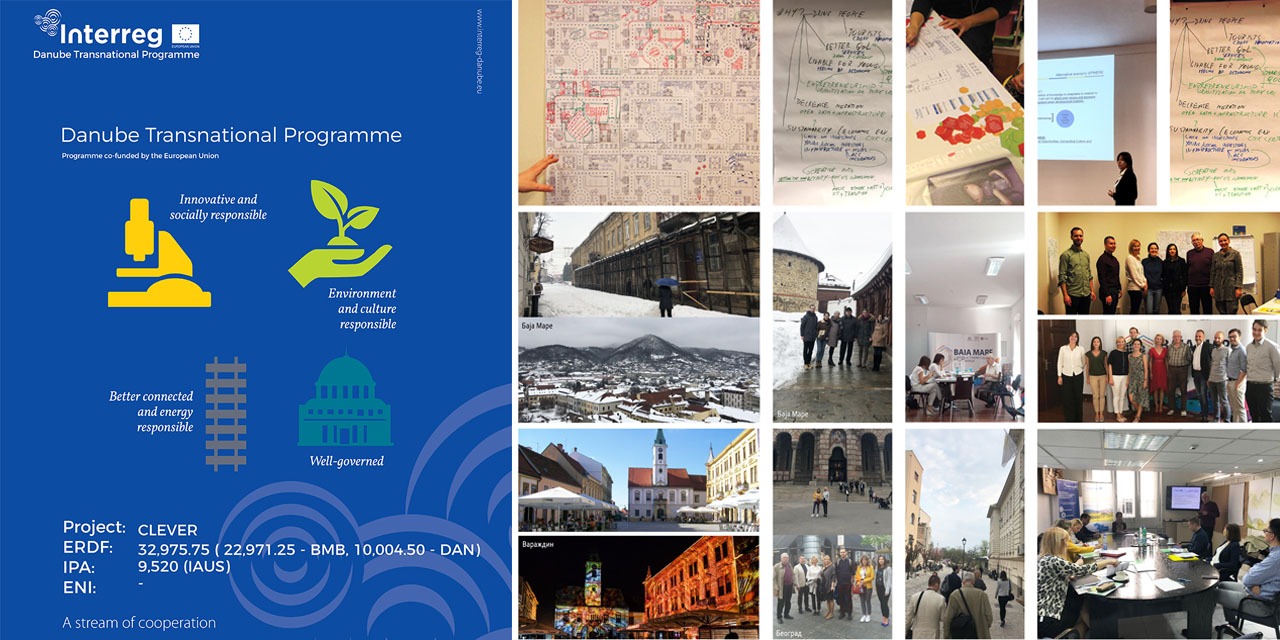
CLEVER Project gives support in identifying potential candidates and project partners for future cooperation in the implementation of the main project. During the meetings of the partners in the municipality of Baja Mare (Figure 1) and in Belgrade (Figure 2), as well as during the last meeting in the municipality of Baja Mare (Figure 3), the projects were designed through the methodology of proposal consideration and communication. The aim was to identify key themes for the main project proposal and two alternative scenarios.
1. Main project – A low level of attractiveness of public spaces, both functionally and aesthetically, is common for the cities in the Danube region. The changing needs of society, economic opportunities, and the need to preserve the environment indicate that we need new models and tools for proactive response to challenges in the field of integrated urban development. CLEVER Project aims to develop new, dialogical and complementary public space perspectives across the region. An integrated approach at the transnational level aims to increase the capacity of the administration to meet the needs of society by exchanging knowledge and skills. During the CLEVER Project, the partners prepared and sent the main project – iCLEVER (intelligent linking of sites, exploiting values and increasing resilience) within the Interreg Danube call (Priority: Good governance in the Danube region; Specific objective 4.1 – Improving institutional capacity to address challenges of large societies).
2. ALTERNATIVE SCENARIO 1: iSPHERE – Innovations in encouraging participatory and holistic commitment to prepare for the sustainable use of natural and urban cultural heritage and resources. iSPHERE is a project proposal within the Interreg Danube call, priority axis 2: the Danube region responsible for the environment and culture, Specific objective 2.2: Promoting the sustainable use of natural and cultural heritage and resources. The aim of the project is to strengthen the collaborative and integrated approach to the preservation and management of the diversity of cultural heritage and urban resources in the Danube region through an approach based on the principles of sustainable development.
3. ALTERNATIVE SCENARIO 2: iSIGNAL – Integral, socially responsible and innovative management for the navigation of assets and sites in order to increase competencies for business and social innovation. iSIGNAL is a project proposal within the Interreg Danube call (priority axis 1 – Innovative and socially responsible Danube region, Specific objective 1.2 – business and social innovation capacity enhancement). iSIGNAL addresses inequality in cities and provides a platform for navigation and enhancement of competencies for business and social innovation, influencing the flexibility of urban development management in urban systems.
The aim of the further development of the CLEVER Projec is to consider other funding opportunities and partnerships for future calls. The idea is to gain a comprehensive understanding of examples of good practice on the topic of resilience, such as identifying potential partners and funding opportunities for the implementation of project proposals.
